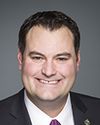I was there when Mr. Parent coined the phrase “a veteran is a veteran”. I think we're at a point in time when we should start to say that a soldier is a soldier, a sailor is a sailor, and an aviator is an aviator. Why do we have classes of soldiers?
In 2006 the Australian government decided to go parity across the board, where all soldiers—they went even so far as to include cadets—are covered. Should they become ill or injured in the service or custody of their country, all those members, both reserve force and others, have full access to benefits and services. I asked the Inspector General of the Australian Defence Force for some input on what happened financially, and they said there was basically no change in what they had done, either administratively or program-wise.
I think we're probably finding ourselves getting to that point. Inside the Canadian Armed Forces you have the army, navy, and the air force, and then some special entities. The way in which reserve force soldiers are used, engaged, deployed, and employed is different inside each element. I think we need some continuity across the board. I think we're at a point in time when we need to start removing complexity from the system, because the first thing a reservist has to do.... The question will be, what type of soldier are you: A, B, B-plus, or C? Once that's determined, that opens up certain doors and gates for you. If you're not a B-plus, then certain benefits and services are not available to you.
Why are we still talking about this? I think what we need to do is start saying that a soldier is a soldier. It changes the game. Removing complexities from the system will start to go right to the core of the issues we're talking about—those who slip through transition, those who don't have some support when they get out. I think that would be my point on that question.




